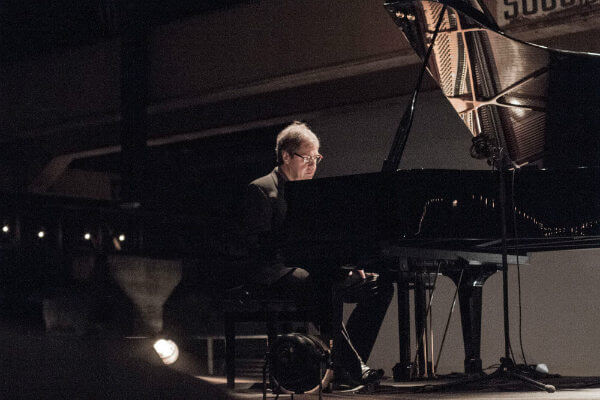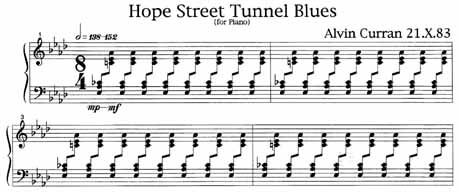 This is a review that I hadn’t intended to write. I’ve had the pleasure of hearing Bruce Brubaker perform live a few times before. When he emailed me that he was coming to Denver for a January 22, 2013 concert at the Newman Center and had a comp ticket waiting for me, I had planned on simply enjoying the evening. I wasn’t worried about a review because I wasn’t sure what I might add to the vast amount of ink and pixels from the finest sources that have already been devoted this artist. And yet, within the first minute of his program, I was already mentally writing this review. If this review is worthwhile, it might be because it is from the perspective of a pianist who has also devoted himself to similar repertoire. But really, this performance was about seeing a fantastic artist completely in his element, and regardless of the medium, that should be enough for you to know that it was an incredible evening.
This is a review that I hadn’t intended to write. I’ve had the pleasure of hearing Bruce Brubaker perform live a few times before. When he emailed me that he was coming to Denver for a January 22, 2013 concert at the Newman Center and had a comp ticket waiting for me, I had planned on simply enjoying the evening. I wasn’t worried about a review because I wasn’t sure what I might add to the vast amount of ink and pixels from the finest sources that have already been devoted this artist. And yet, within the first minute of his program, I was already mentally writing this review. If this review is worthwhile, it might be because it is from the perspective of a pianist who has also devoted himself to similar repertoire. But really, this performance was about seeing a fantastic artist completely in his element, and regardless of the medium, that should be enough for you to know that it was an incredible evening.

Bruce’s program consisted entirely of music that I know, and moreover, I had already heard his interpretations of every piece either live, streamed, or on CD. Yet when he opened with Philip Glass’ Mad Rush (1979), I was still immediately enraptured. The control that Bruce exhibited, both over the piano and the music, was outstanding. His exquisite tone, clear musical ideas, and passion brought the audience immediately into the program; it’s not often an audience is so intensely quiet. Three other Glass pieces, including the beautiful Etude 5, were on the program, and while I’ve heard other pianists tackle some of these, I’ve never heard them played so convincingly. It’s easy sometimes to hear a Glass piece and think, “Really? More minor thirds?” But Bruce was able to bring out, if I may say so, the soul of the music. I’ll happily listen to Glass’ minor thirds under his hands any day.
If the Glass pieces demonstrated Brubaker’s musical prowess (I can’t stop thinking about his tone), Alvin Curran’s Hope Street Tunnel Blues III demonstrated his technical control. I could describe the piece for you, but instead, I’ll just give you a little bit of the score and tell you the piece lasts over 16 minutes.

As with so much repetitive music, and particularly fast repetitive music, flaws in technique get exposed in a hurry. It is easy to dismiss the effect of such duration in such a situation, but just because a pianist can do something with ease for a couple of minutes does not mean that sustaining it for 16 minutes is even remotely easy. As time increases, the technical approach to the pattern has to be increasingly flawless. But technical facility is of course only half of the equation. For a pianist to survive this piece intact is one thing, but to have enough control to make it musical is another entirely. Bruce, as expected, was able to bring his keen insight to this piece. While many may have been dazzled by his flying hands, I was impressed by how musically cohesive his interpretation was. Technique is a wonderful thing so long as it serves artistry, and Bruce clearly has both in spades.
Bruce Brubaker
University of Denver, Newman Center
January 22, 2013
Program:
Mad Rush – Philip Glass
“Knee Play 4” from Einstein on the Beach – Philip Glass/Bruce Brubaker
Drones and Piano – Nico Muhly
Etude 4, Etude 5 – Philip Glass
Hope Street Tunnel Blues III – Alvin Curran
–
R. Andrew Lee is an avid performer of minimalist and postminimalist piano music and records for Irritable Hedgehog Music. Follow him on twitter: @andyleedma.
























